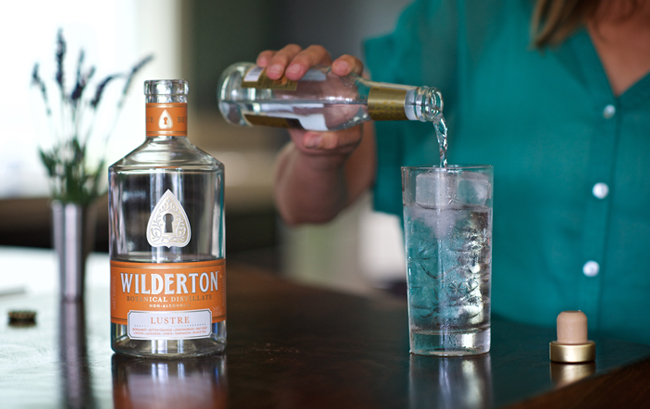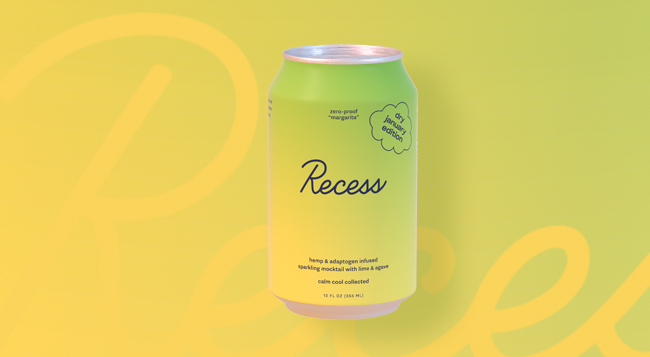As you’ve probably heard by now, January is the month of soaring gym membership numbers, of the start of record numbers of new diets, and when several million Americans commit to going “dry” for the first month of the year.
Unleashed a decade ago by British non-profit group Alcohol Change UK, “Dry January” has evolved from a grassroots awareness campaign into a trademarked, worldwide annual frenzy that continues to gain momentum: In a survey of 2,200 U.S. adults conducted in January 2021, 13% said they gave up alcohol in January, mainly for health reasons. Overall, sales of non-alcoholic beer or spirits were up 33% to $331 million through October, according to NielsenIQ data, while both low-alc and non-alc drinks saw online sales increase 315% over the past year.
For brands in the burgeoning no-and-low space, the opportunity to build messaging around Dry January is clear. And as the movement has evolved, so have the approaches those brands are taking to drive eyes to the category, both during the month, and beyond.
Before a brand can begin to think about Dry January marketing, however, there’s a price to pay – the term is a registered trademark of Alcohol Change UK. Yet there’s good reason that companies are still eager to license the name: according to consumer data firm Pattern, non-alcoholic beverages hit their yearly peak in demand in January 2020. After leveling off, demand spiked in late December and remained high through January 2021, which analysts noted “suggests there were a lot more people interested in alcohol free alternatives after the first year of COVID.”
The trend towards low-and-no alcohol lifestyles has broadened to include a wide spectrum of demographics that enter the space for different, personal reasons: see Athletic Brewing Company’s success connecting with the running community, or the range of products aimed at high-end cocktail aficionados with products from erstwhile booze luminaries like Death & Co. Even under the general umbrella of health and wellness, there’s room for individual interpretation: According to IWSR, 58% of no-and-low product consumers still drink alcohol in moderation.
With the tent rapidly growing, Dry January is becoming less of an end unto itself and more of a place where non-alc brands can meet and listen to their consumers.
“I think our biggest thing has been to do Dry January your way,” said Sharelle Klaus, speaking on the phone last week. A longtime advocate for zero-proof drinks, she’s had a front-row seat to the growing momentum around Dry January with her sparkling beverage brand, DRY Botanical Bubbly (former DRY Soda). After seeing meager returns on investment with Dry January-themed in-store displays and POS merchandising several years ago, she said that DRY has changed its marketing approach to be more inclusive, accessible and event-oriented.
“We did a whole year where it was a ‘Dryer January,’ so the concept being maybe you only drink on the weekend or you cut [alcohol] out in some form or fashion but you do it in your way, because I think for some people it can be very intimidating to go to zero overnight. I think it helps bring some people along – we’re trying to make it less of this demanding type thing and more just a fun health and wellness thing to try out.”
With individuals finding their way into the space year round, non-alcoholic wine label SipC has shifted its messaging around the month from “dry” to “why.”
“Everyone has a personal reason for why they participate in Dry January – often it isn’t just about going ‘dry’ anymore,” said founder Alex Klempf. “It might be wellness or fitness inspired, a career that requires a lot of travel and work dinners where drinking is the norm throughout the year, or an evening routine that always includes imbibing. Whatever the motivation to participate in Dry January, we feel like it is important to encourage a holistic approach and to reflect on the ‘why’ in order to create healthy habits for the year ahead.”
Meanwhile, for relative newcomers like zero-proof spirit maker Wilderton, a lack of experience means looking at the opportunity with fresh eyes. Wilderton Co-Founder and Distiller Seth O’Malley said the Portland, Oregon-based company is going into its second Dry January with consistent messaging centered on the idea that cocktail making – even with non-alcoholic ingredients – elevates the drinking occasion.
“We believe that cocktails are about more than their alcohol content and frankly don’t need to be non-alcoholic copycats of existing drinks,” he said. “Our biggest learnings have been around just how much education is needed for consumers, bartenders and hospitality professionals, both about the category in general and how to enjoy new standards like Wilderton.”
From a branding perspective, Dry January is also a chance for products from adjacent categories to become a part of the conversation around no-and-low alcohol drinks. Los Angeles-based Recess has touted its fit across multiple use occasions as one of the primary strengths of its range of relaxation and anti-anxiety functional beverages featuring ingredients like hemp and magnesium. But now, as consumers been naturally gravitating towards using Recess as an alcohol alternative, founder and CEO Ben Witte said the brand plans to lean into that positioning as shifts away from paid ads and back towards partnerships, influencer marketing and some of the “buzzy brand marketing” it made headlines with pre-COVID.
That starts this month with the release of a special “Dry January Edition” flavor, Zero-Proof Margarita, aimed at helping ease curious new consumers into the brand with a familiar cocktail flavor. Like DRY and SipC, the idea is to build a Dry January message for consumers focused on what is gained rather than what is taken away.
“I think what you’re going to see is products like Athletic Brewing or Ghia which have essentially no functional ingredients and it’s just a flavor play, and then you’re going to have products like Recess which are trying to deliver this new feeling akin to one of the core use cases for alcohol, which is to relax,” he said. “I think that’s just one of these these insights that we’ve observed over the past couple of years and you’ve started to see within our marketing: the use case for the existing product lines as an alternative to alcohol.”
With that in mind, fixating on any individual month may be missing the point. Rather than having extended dips between January and December as in 2019 and 2020, last year monthly demand for non-alcoholic beverages was consistently ahead of both previous years, according to Pattern. But whether it’s Sober October, Dry July or any other month, January is as good a time as any to get the conversation going.
“I’ve upped all our ad budgets and our PR firm is working overdrive on the stories, but we’re pushing stories about Dry January and how to participate,” said Klaus, “because our mission of ‘social drinking for all’ fits that concept of getting people to understand what Dry January can be.”

